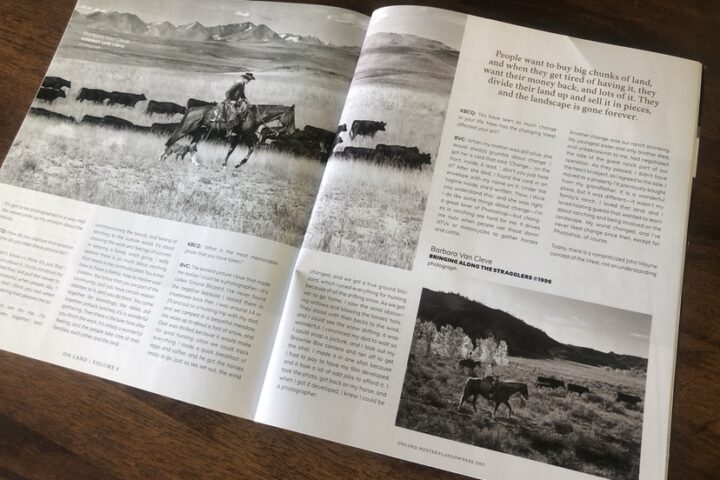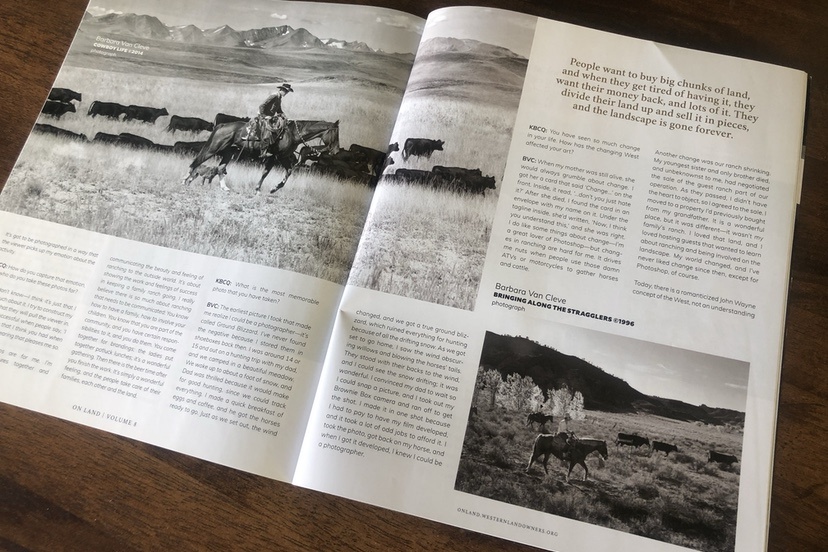When it comes to water in the West, one simple fact stares at us from the mirror: There isn’t enough. The average annual shortfall just in the Colorado River Basin, not counting undeveloped tribal water rights, is 4 million acre-feet…
— from the article “Beyond Scarcity: Can we restore vitality in a drying West?” by Lesli Allison in the Spring/Summer 2024 issue of ‘On Land’ magazine.
As I write my editorial installment this morning, I’m drinking coffee, brewed with clean Colorado mountain water.
I point that out, just to be clear that I’m not drinking Kool-Aid.
Many thoughtful people are concerned about water resources in the American West. That being said, some thoughtful people don’t spend any time at all worrying about the issue, what with so many other pressing problems to worry about. The price of gas, for example. Poorly maintained roads. A serious housing shortage.
But water is life.
One of the thoughtful people who has been giving some attention to the water issue is Lesli Allison, the CEO of the Western Landowners Alliance. In a recent editorial in ‘On Land’ magazine — a publication of the Western Landowners Alliance — she writes:
The West is used to drought. Aridification, however, is a whole other level. Aridification is more than drought, more than megadrought. Think Sahara. Think Gobi.
Increasingly, this is the forecast for the American West. But it isn’t news. Alarms have been sounding about climate change, drought and aridification for more than two decades…
…Yet what if it were possible to reverse this trend? What if we could slow or stop aridification and actually increase water supplies? What if prevailing wisdom and policy around water conservation and water use are taking us in the wrong direction?
In her op-ed, Ms. Allison paints a fascinating picture of climate science and the future of ranching in the American West, from the perspective of a ranch manager. After warning us that Colorado could become the Sahara Desert if we’re not careful, she wonders if the ranching industry — instead of draining us all dry — could in fact be the solution to the aridification of the American West.
If you are a member of the Western Landowners Alliance, it likely means you own a cattle ranch… and if you own a cattle ranch, you may also own historical water rights for irrigating the grass and alfalfa needed to feed your cows during the grazing season and through the winter months. The fact is that, in Colorado, cattle ranching consumes much more water than municipal water districts. This makes the beef and dairy industries the “bad guys” in the eyes of certain thoughtful people who are concerned about current and future water shortages in the American West.
Disclosure: I currently serve as a volunteer on the Pagosa Area Water and Sanitation District (PAWSD) Board of Directors, but this editorial reflects only my own personal opinions and not necessarily the opinions of the PAWSD Board as a whole.
Volume 8 of ‘On Land’ magazine — which includes Ms. Allison’s editorial — also includes a number of stunning photographs by legendary Western photographer Barbara Van Cleve, all of which portray rugged cowboys herding cattle across scenic and seemingly endless landscapes.

In her editorial. Ms. Allison refers to “the bigger picture of the hydrologic cycle.” This is a picture not fully understood by science, although we suspect that we understand parts of it, and probably have some fanciful ideas about the rest of it. We understand, for example, that plants absorb water from the ground through their roots, and that some of that water is released into the atmosphere through a process scientists call ‘evapotranspiration’. Theoretically, then, the moisture from plants (and trees) ultimately contributes to the formation of clouds, which may (or may not) release that moisture back to the landscape in the form of rain or snow.
Could more effective irrigation of grass and alfalfa, on cattle ranches, actually revitalize the rivers in the American West? Ms. Allison apparently hopes so.
An interesting theory, and similar to a theory summarized by Charles Dana Wilber in the late 1800s:
God speed the plow… By this wonderful provision, which is only man’s mastery over nature, the clouds are dispensing copious rains… [the plow] is the instrument which separates civilization from savagery; and converts a desert into a farm or garden… To be more concise, ‘Rain follows the plow’.
The basic premise of the ‘Rain Follows the Plow’ theory was that human habitation and agriculture through homesteading effected a permanent change in the climate of arid and semi-arid regions, making these regions more humid. The theory was widely promoted in the 1870s, as a justification for the settlement of the Great Plains, and also used to justify the expansion of wheat farming on marginal land in South Australia during the same period.
The theory was later refuted by climatologists and is now definitively regarded as false.
Ms. Allison acknowledges that the theory is false… but then seems to argue that, well… maybe it’s actually true?
A common, emerging theme in much of the research we reviewed is that scale matters: both the scale of projects and the geographic scale of the evaluation. Increased vegetation and evapotranspiration may, in fact, result in increased rain somewhere, but that rain may fall in a different watershed. At a very local level, transpiration may be a net loss, while at a regional level, depending on the size, nature and location of the area, it could help stem aridification.
The basic idea behind Ms. Allison’s editorial seems to be this:
We don’t need to change the way agricultural operations divert and consume water. We just need to get better at doing it, and thus we can preserve Colorado’s ranching lifestyle.
We are not creating a new Sahara desert after all.
My own tendency is to steer clear of Kool-Aid as a drink, and stick to coffee. (Fair Trade coffee, when possible.)
The American West does not have a water shortage problem. It has a mythology problem. The myth is that we can keep living the same, water-wasting, water-rights-based lifestyle as we’ve embraced since the West began to be settled by American settlers in the 1800s, even though our population has expanded exponentially.
Take Colorado, for example. Population in 1900: 540,000. Population in 2024: 5.9 million. An increase of 1,000%. With the same amount of water as in 1900.
Or take Arizona. Population in 1900: 123,000. Population in 2024: 7.3 million. A 6,000% increase.
If I were a rancher, or a ranch manager, I might want to hang on to my myths as tightly as possible, and maybe even publish them in a glossy magazine.
But if I were on the board of an Archuleta County water district… what myths might I be embracing?

